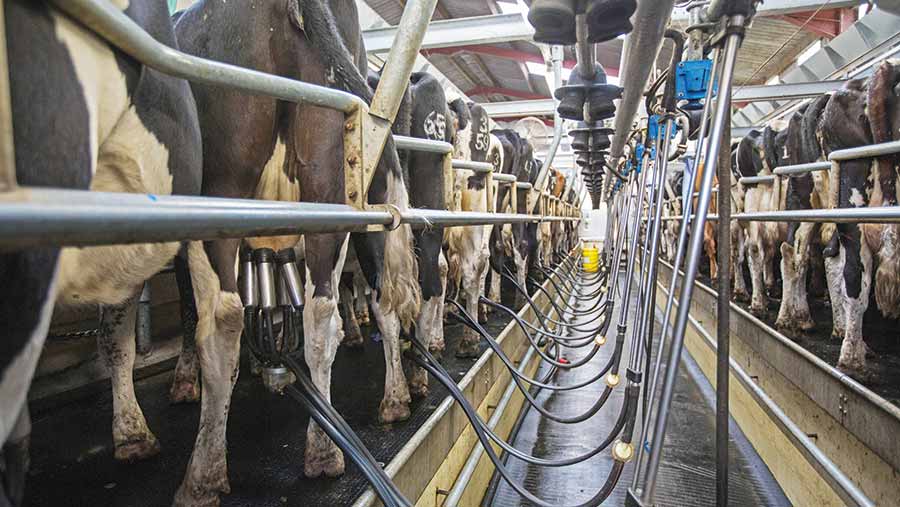Dairy market uncertainty for start of 2018
 © Tim Scrivener
© Tim Scrivener Falling dairy wholesale markets could pressure farmgate prices in the new year, but there are many factors at play.
Dairy commodity prices are down, fat stocks are relatively tight and demand is set to rise as pre-Christmas stock buying should begin soon.
However, with wholesale prices falling and milk production rising, buyers seem to be holding back.
See also: How genomics could benefit even top-ranked dairy herds
This week’s New Zealand-based GDT online dairy commodity auction saw its index drop for the third time in succession. It lost 3.5% this week, after falling 1% the previous fortnight and 2.4% at the sale before that.
Whole milk powder fell by the greatest degree this week, down 5.5%, while butter fell 3.6% and cheddar 2.8%.
Milk market facts
- Milk output volume is up 5-6% in France and Germany, while UK daily output has been up to 4% higher than last year.
- On a butterfat basis, the EU is up just 0.8% so far this milk year, with only the UK and Poland producing more than to the same point last year.
- SMP futures were hit recently when the European Commission proposed to abandon fixed-price intervention and replace it with a tender process from April 2018.
- Since then, futures contract values from spring 2018 on have recovered slightly, but remain down on levels before the proposal announcement.
The rapid and welcome rise in UK farmgate prices since June has already all but stalled.
Several buyers have yet to announce a December price, but a farmgate value of 31p/litre, which some are paying, could not be supported by current commodity prices, said dairy analyst Chris Walkland.
Commodity wholesale prices
UK skim milk powder (SMP) prices have fallen for most of 2017, but wholesale prices of other commodities have also dropped in the past several weeks, with butter and cream values hardest hit.
The falls follow rapid price rises for most commodities since May last year.
Mr Walkland described the SMP market as “a disaster area”. While prices for many commodities remain well above those of a year ago, UK SMP was worth 27% less in October this year compared with the same month of 2016, according to AHDB Dairy.
Mr Walkland said it was crucial for the industry that other retailers followed Morrisons’ lead and raised the shelf price of milk. Morrisons raised its four-pint pack price by 10p to £1.10 in late October.
Milk production
EU milk production is higher than a year ago, but that time marked the start of the EU’s milk production reduction scheme, which financially incentivised producers to cut production.
Global milk production is expected to rise next year and while the recovery in world dairy markets had been slower than in previous (three-year) cycles, the continual increase in global dairy consumption should offer some support to prices, said AHDB Dairy.
Lead analyst Chris Gooderham said butter prices could not have remained where they had been.
The high prices had dampened demand a little as people simply could not afford it at the levels it had reached.
Farmgate prices generally lagged behind wholesale market movements by two to three months, so it was too early to say they would drop in the new year.
“Prices have not fallen enough to warrant that yet,” said Mr Gooderham.
“Production is slightly up in the EU, but we are in the production trough in the northern hemisphere. We need to watch what is happening with southern hemisphere production.”
Mr Gooderham said the two-year rolling mechanism used by Arla to smooth currency fluctuation and calculate the UK price could deliver some price benefit to Arla members next time it was used.
